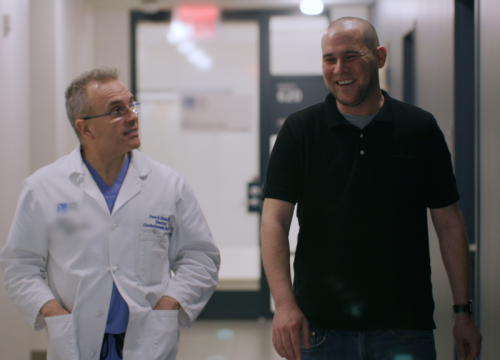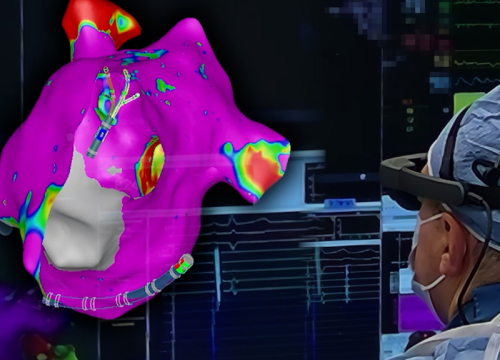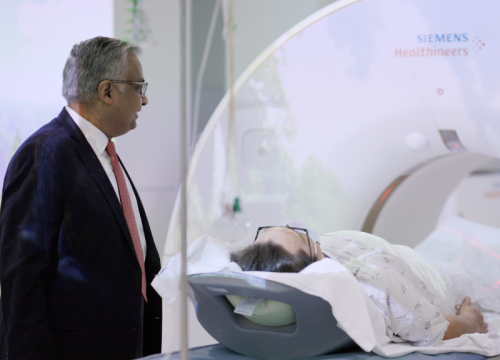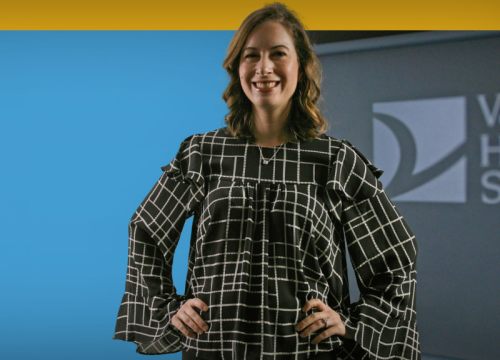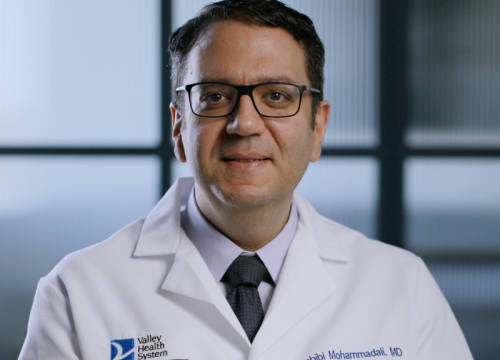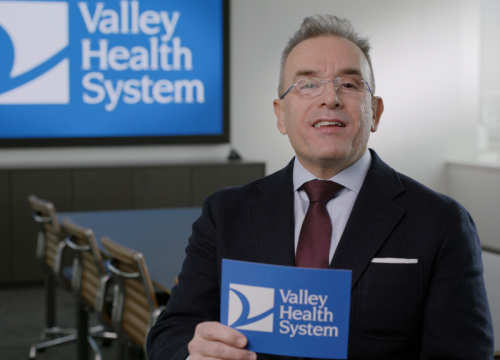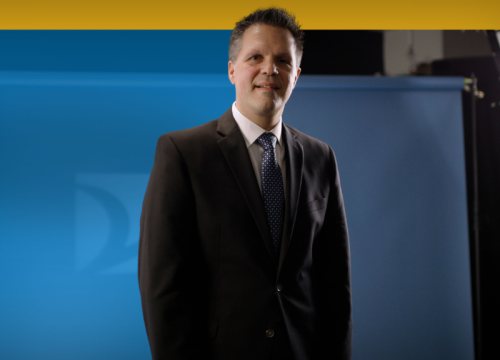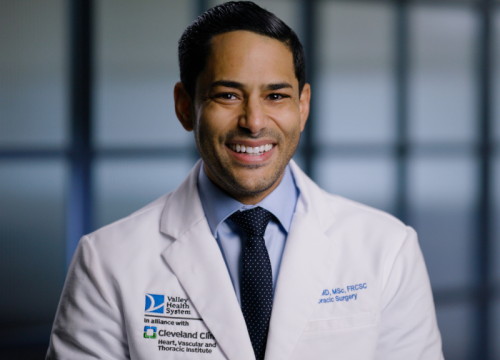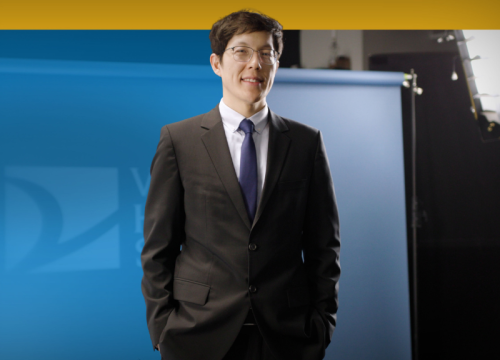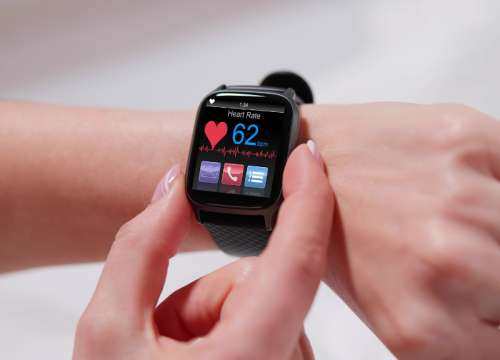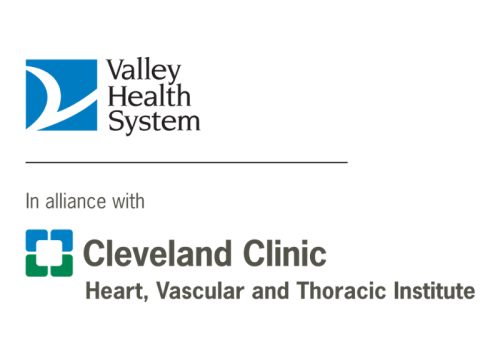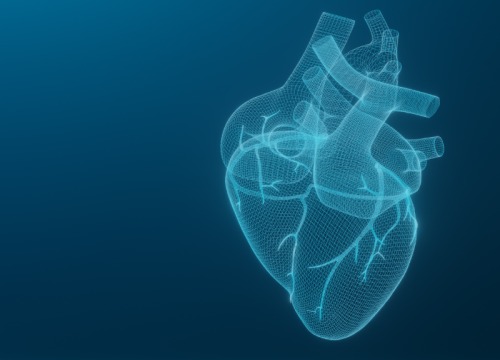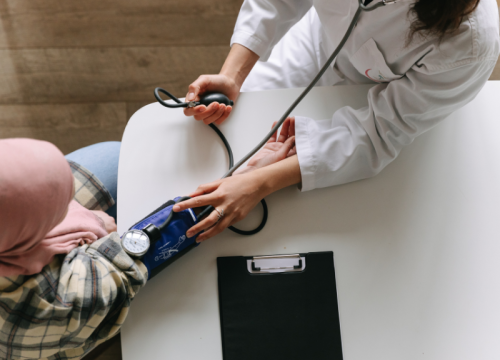Read important information about Valley's continued commitment to serving our patients and respecting their privacy, regardless of immigration status.
Read MoreLiving with an aortic aneurysm can be stressful, but when managed properly, patients can enjoy an excellent quality of life. That’s why Valley developed the Integrated Aortic Program. Our well-established diagnostic, surgical and surveillance program offers comprehensive care for patients with aortic aneurysm.
Our cardiology department embraces a holistic approach focused on and tailored to each patient, and the team is committed to high-quality care and patient safety, using leading-edge research to offer patients the latest treatments and clinical advice.
WATCH: Meet Habib Jabagi, MD, Director of Valley's Integrated Aortic Aneurysm Program, and learn how Valley can help patients live with an aortic aneurysm.
Learn About Aortic Aneurysms
What Is An Aortic Aneurysm?
The aorta is the largest artery in our body, which carries blood from the heart to the rest of the body. Some patients have parts of the aorta that may weaken and begin to bulge – this is an aortic aneurysm. Many do not realize that they have this condition. If the aneurysm continues to grow, it may lead to further weakening of the aorta and a rare event such as an aortic dissection. This is a tear in the wall of the aorta that requires immediate treatment.
Who Do Aortic Aneurysms Affect?
People at almost any age can be diagnosed with an aortic aneurysm. As thoracic aneurysms typically do not have symptoms, many patients learn of their aneurysm when they have tests such as an X-Ray or CT scan for another condition. A person may be screened for an aneurysm if they have a family history of thoracic aneurysms or connective tissue disease.
What Can You Expect if You Have an Aortic Aneurysm?
Every patient with an aortic aneurysm is different. Some patients will have aneurysms that remain about the same size for many years; others will have more growth in their aneurysm over time. Most patients do not need surgery, and their aneurysm can be safely managed using surveillance and medical follow-up. For patients who have a large or unstable aneurysm, surgery may be recommended.
WATCH: At a free medical exam for first responders, Brian Kelly learned he had an aortic aneurysm, which led him to Valley for his care. Hear his story, in his own words.
The Valley Approach to Thoracic Aortic Aneurysms
Diagnosis and Imaging
Your Aortic Aneurysm Team
Cardiac Surgeons - 201-447-8398
Habib Jabagi, MD, BSc, MSc, MLP, FRCSC
Juan.B Grau, MD, FACC, FACS
Integrated Aortic Program Advance Practice Nurses
Caitlin Ciallella, DNP, APN, AGACNP-BC
Leanne Scaglione, MSN, NP-BC
Administrative Coordinator
Susan Conzelmann, BS
Accurate imaging is important to establish a diagnosis and determine the best treatment for an aortic aneurysm. Our state-of-the-art imaging facilities offer the latest imaging modalities including MRI, CT and echocardiography, all guided by the program’s imaging experts. Our specialized aortic radiologists review images with the rest of the program’s clinical team to help personalize the recommendations and treatment plan for each patient.
 We use advanced cardiac imaging to pinpoint the location of your aneurysm. We also look for other heart issues that affect your aneurysm’s management. For example, patients who have a condition called a bicuspid aortic valve (BAV) are more likely to develop an aortic aneurysm. Aortic valve issues such as aortic regurgitation (leaking valves) or aortic stenosis (blocked or narrowed valves) frequently occur with both BAV and thoracic aortic aneurysms. Patients in Valley’s Integrated Aortic Program can benefit from a full evaluation by our aortic radiologists and cardiologist, to ensure they’re receiving the same tailored, high-quality care we offer to all of our aortic patients.
We use advanced cardiac imaging to pinpoint the location of your aneurysm. We also look for other heart issues that affect your aneurysm’s management. For example, patients who have a condition called a bicuspid aortic valve (BAV) are more likely to develop an aortic aneurysm. Aortic valve issues such as aortic regurgitation (leaking valves) or aortic stenosis (blocked or narrowed valves) frequently occur with both BAV and thoracic aortic aneurysms. Patients in Valley’s Integrated Aortic Program can benefit from a full evaluation by our aortic radiologists and cardiologist, to ensure they’re receiving the same tailored, high-quality care we offer to all of our aortic patients.
Imaging does not end with diagnoses. Radiologists remain a key part of the care team during follow-ups and any other visits.
Risk Assessment
At Valley, our team uses evidence-based guidelines and newly-developed techniques to assess each patient’s aortic aneurysm and develop an individualized treatment plan.
Surveillance
Valley’s Integrated Aortic Program offers regular follow-up and careful management to ensure you receive high quality care based on the latest evidence. We keep a close eye on your aneurysm’s characteristics to be sure surveillance instead of intervention (such as surgery) is appropriate. Valley currently has over 1,700 patients under surveillance in the program, ranging from 17 to 90 years of age.
First-Degree Relative Surveillance Program: Sometimes, aortic aneurysms run in a family. If a patient is diagnosed with an aortic aneurism, it is important for them to notify family to potentially be screened for an aortic aneurysm as well. The First-Degree Relative program provides screening, imaging and long-term surveillance for those individuals who have a relative diagnosed with a thoracic aneurysm.
Conditions Treated
- Thoracic aortic aneurysm
- Bicuspid aortic valve (BAV)
- Aortic root aneurysm
- Ascending aortic aneurysm
- Thoracoabdominal aortic aneurysms
- Abdominal aortic aneurysms
Treatment Options
Every patient in the Integrated Aortic Program receives an individualized treatment plan that includes managing risk factors such as high blood pressure and high cholesterol. Patients also receive personalized education on safe activities and lifting with an aneurysm. For most patients, regular surveillance combined with risk factor management is enough treatment to safely manage their aneurysm.
Treatment options include:
- Surgery, if needed
- David procedure (valve-sparing aortic root replacement)
- Endovascular repairs or stents
Why Choose Valley for Aortic Aneurysm Surveillance and Management
Patient- and Family-Focused Care
Our team and your cardiologist will stay in close contact and remain on the same page regarding your care. We strive to create an environment where every patient feels safe, supported and cared for from their very first interaction with our team. By making sure that the patient understands their diagnosis and treatment options, we help to empower our patients and their families to make choices that work for them.
Personalized Surveillance
Each patient is seen regularly to monitor their aorta. They will have imaging tests coordinated by our program administrative associate, coupled with annual visits for follow-up. Education is an important aspect of care, and we offer education on nutrition, stress management, and safe exercise with a thoracic aneurysm. We encourage patients and their families to reach out to our nurse practitioners at any time should any questions or concerns arise.
Support Group for Thoracic Aneurysms
Patients diagnosed with an aortic aneurysm are faced with a change to their health that can feel overwhelming. Valley’s Integrated Aortic Program has patient support groups that meet regularly online and in person. These groups provide a supportive environment for thoracic aortic aneurysm and aortic dissection patients to share stories, concerns and advice with fellow patients and their loved ones.

Excellent Patient Outcomes for Aneurysm Surgery
The type of treatment recommended for a patient’s aortic aneurysm depends on factors such as the type and location of the aneurysm, the need for additional procedures such as a valve intervention, and the patient’s age. If surgery is necessary, our cardiac and vascular surgeons are experienced in a wide variety of aneurysm procedures and techniques, with a focus on personalized treatment plans and the highest degree of care quality and patient safety.
Genetic Testing
Valley’s team uses advanced technology and genetic tools to tailor treatment to every patient. This genetic testing can include identifying the genetic expression of aortic aneurysms or generating a risk profile based on genetic markers. Through our First Degree Relative program, we also monitor family clusters of aortic aneurysms.
Collaboration and Research
Valley’s alliance with Cleveland Clinic’s Heart, Vascular & Thoracic Institute is a valuable resource for monitoring and treating aortic aneurysms and dissections. Our clinicians connect with their colleagues at Cleveland Clinic to share images and clinical information, as well as obtain a second opinion from a nationally ranked heart program. Also, through participating in and sharing research opportunities, we can provide our patients with the most innovative surgical and endovascular techniques and technologies.



